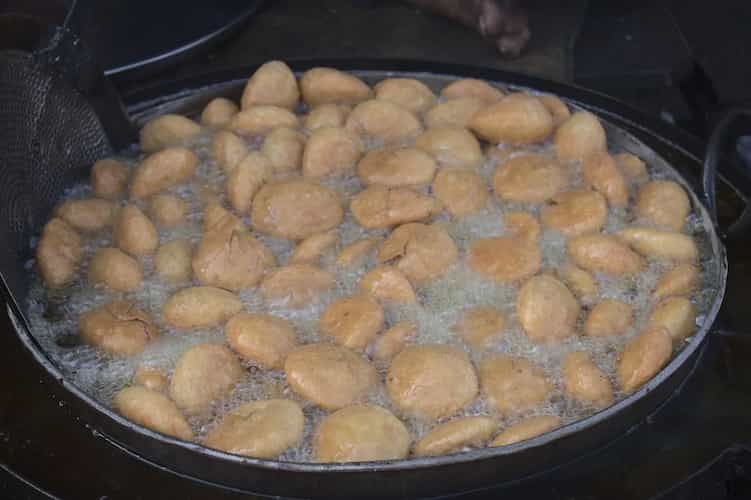On a dreary night in Jodhpur, two of my friends decided to take off on a mini-expedition of sorts. Everything was going well until their bike broke down in the middle of a relatively unknown road. They parked it near a house and asked for permission from the owners to stand there while arranging for help. Fortunately for them, they bumped into a family that was incredibly warm and welcoming. They invited them over and offered them a meal of a Ghee-laden Bajra Roti and Lehsun Ka Achaar.
Further, the hosts also guided my friends about where they could purchase the best Mathaniya chillies. My friends walked out as elated guests, and the story soon made it to their Instagram feeds. Likes and comments poured in from all over, one of which read “Saved by Bajra”. And indeed, for the Marwari community, Bajra has been more than just a ‘staple’. It has helped them survive the most difficult droughts and even fight wars.
When Bajra Reached India
You would be surprised to know that Bajra or pearl millet is not native to Rajasthan. That’s right, and they came to India from Africa somewhere around 2000 B.C. From excavations sites near Hallur district, it was found that Bajra was one of the most widely cultivated crops around 1500 B.C. due to the favourable climate of the country.

A big part of Rajasthan is covered in a desert with minimal vegetation. Therefore, twigs, beans, berries, wild shrubs are a regular feature in the curries of Marwari cuisine. There is a reason for the high amount of spices too, and it is said that it helps keep people calm and their blood pure in the torrid heat. Since it is difficult to cultivate crops like wheat or rice, Bajra takes centre stage. From Bajre ki Roti to Bajre ki Baati, you can find a range of satiating items on a Marwari platter. The Marwaris take immense pride in their love for Bajra.

When Bajra Became Marwari Soldiers' True Superpower In The Intense Battle Of Sammel
Back in 1543, when Sher Shah Suri set out for a battle against Maldeo Rathore with over 80,000 men. They halted in the village of Sammel, about 90 kilometres away from Maldeo’s capital Jodhpur. Maldeo’s army was much smaller in comparison, but they marched towards Suri’s men anyway, and the gruesome battle continued for over a month, causing severe casualties in Suri’s army. This prompted Suri to resort to cunning means, and he forged a letter and started a rumour that some of Maldeo’s army commanders were assisting Sher Shah’s men. Maldeo soon abandoned his loyal commanders and left with few of his men. The remaining army gave a stiff fight to Sher Shah Suri’s army despite being much smaller in number Sher Shah Suri emerged victorious in the battle of Sammel, but he did proclaim ‘that for a few grains of Bajra, he could have lost his entire kingdom’, acknowledging the strength and might of Maldeo’s soldiers who fought without food, surviving only on a handful of Bajra.
Besides fortifying soldiers, bajra is also considered very healthy for growing children. For instance, Bajre Ka Daliya, a porridge made with Bajra and ghee as core ingredients, is served to infants and children for building strength. Additionally, Bajre ki Khichdi is another typical comfort food you are most likely to find in a Marwari household.
When you think of a desert, you only think of the blazing hot temperature and rarely consider the equally harsh winters. Bajre Ka Raab, a soothing winter drink made with Bajra, jaggery, ginger, and ghee, has caught the fancy of the entire country. It is warm, filling and also known to ward off the risk of cold and flu.
Bajra is perhaps one of the most versatile millets that you can bring to your kitchen. And if you are looking for the best recipe to start with, here’s one.


